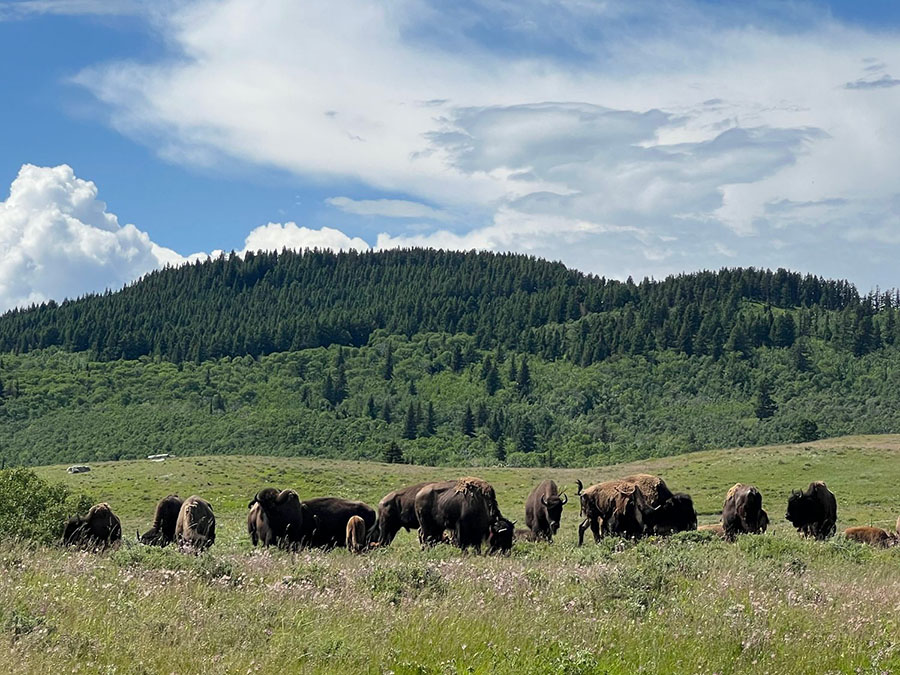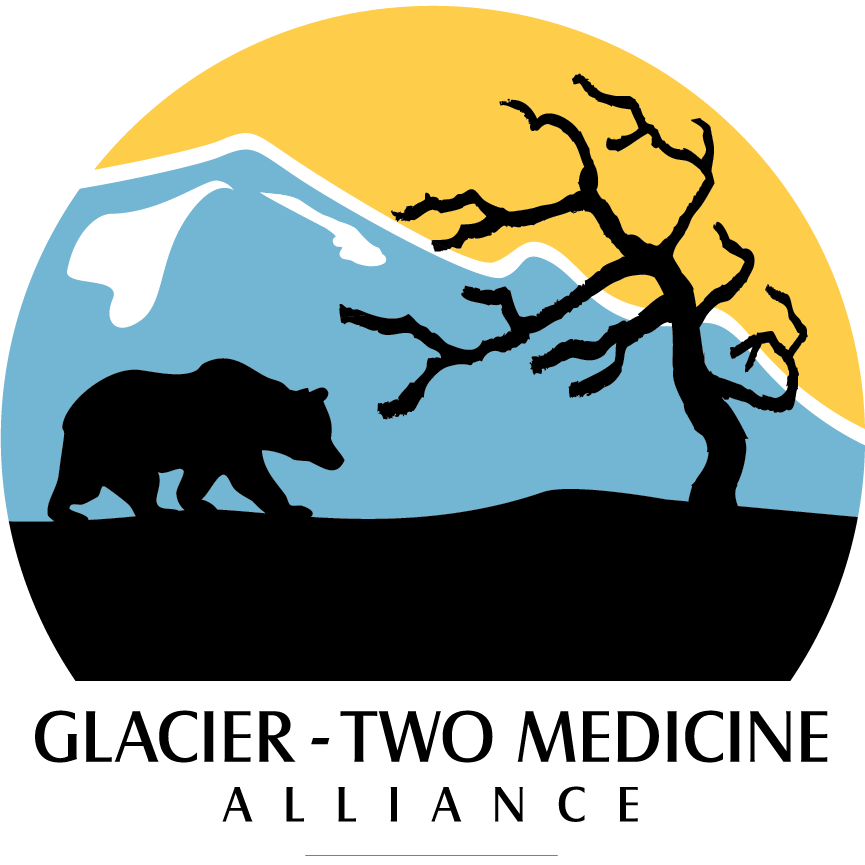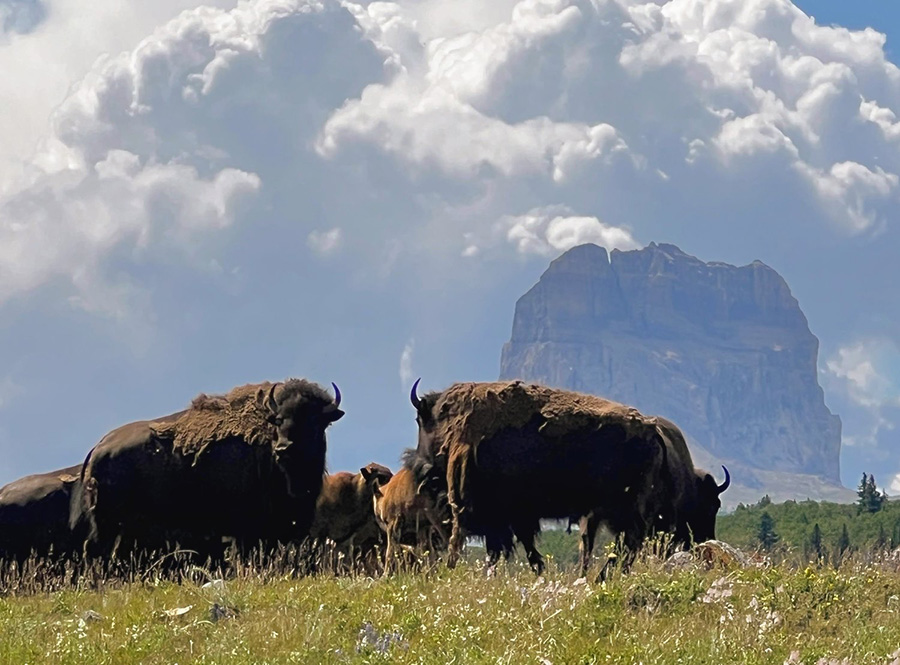
By Peter Metcalf, Executive Director
The air was electric with anticipation as about 100 people waited near Chief Mountain on the Blackfeet Reservation for a moment years, if not decades, in the making. With the tug of a rope, the gate on the stock truck swung open and over two dozen bison charged out. The thundering sound of hoofbeats and cheers from the onlookers filled the sunny summer air as the bison gathered themselves in the acclimation pen.
A short while later, Blackfeet tribal leaders opened the gate, and the bison ran out. There were no fences to hold them back this time. They quickly fell in line behind the lead cow, and headed west toward the Chief Mountain, as if drawn by an invisible force, back to these lands their ancestors once roamed. It was as if they recognized their purpose, a sacred mission to restore what was lost.
As we watched the bison stream west, we all knew we were witnessing history and healing.
Bison, or Iinnii in the Blackfeet language, roamed this region for millenia, shaping the ecology of the grasslands and forests, and serving as the center of Indigenous communities' economy, culture, and spirituality. The sound of their hoofbeats and bellows was last heard in what is today the Blackfeet Nation and Glacier National Park in 1884.
With few, limited exceptions, there are no truly wild bison in Montana, and only a few thousand in the U.S., not even a fraction of what was a preconquest population estimated at 50 million. The 120+ year effort to save bison from extinction has mostly occurred in some sort of confined range.
Seven years ago the Blackfeet Nation, with support from the Wildlife Conservation Society, the Oakland Zoo and other partners, repatriated genetically-pure, disease-free bison from Elk Island National Park in Canada that were the direct descendants of some of the last bison to freely roam these lands.
Now, for the first time in their lives, these 25 - 30 bison are free to live the way they are supposed to.
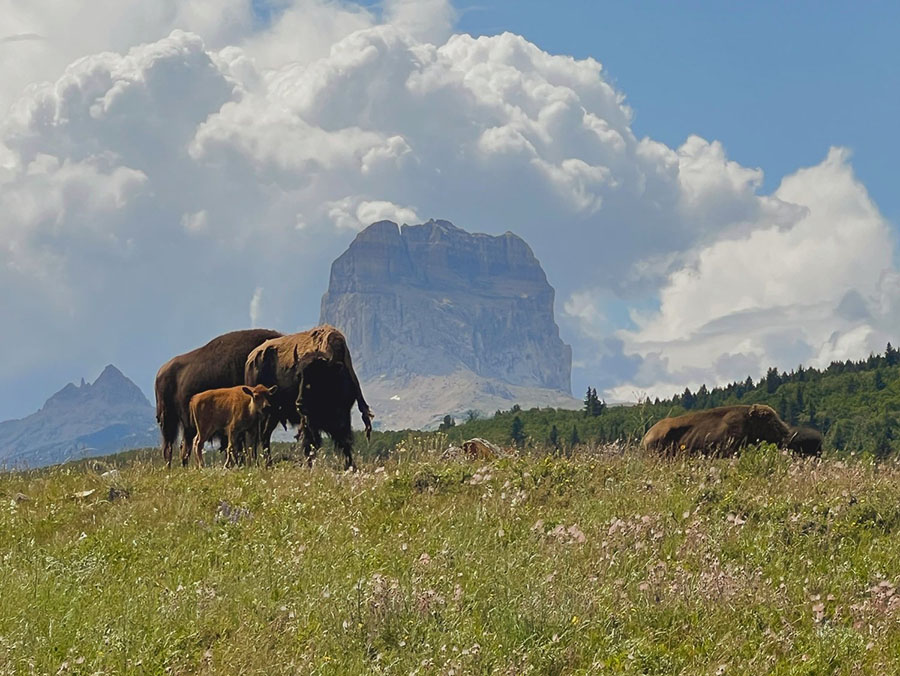
For me, it felt like the land took a deep sigh of relief when the bison stepped out of that trailer. The bison’s return means more than just their physical presence. They are now free to interact with plants, animals, grass, birds and soil that hasn’t felt their touch for more than a century. It’s a rekindling of ancient relationships and ancient grazing patterns which will strengthen ecological diversity and resilience.
But this restoration isn’t just about conservation. It’s as much about tribal sovereignty and cultural healing. This day would not have happened without Blackfeet leadership and commitment to do the right thing in the face of so much widespread fear about wild bison in Montana. As we watched the bison disappear toward Chief Mountain, I couldn’t help but notice the pride on the faces of Blackfeet leaders and tribal members who have spearheaded this restoration initiative for over a decade.
Their relationship with these animals goes back since time immemorial. For generations, bison herds have cared for the Blackfeet by feeding them and sustaining their culture. Now, as John Murray, Tribal Historic Preservation Officer told me, it’s the Blackfeet’s turn to take care of the bison.
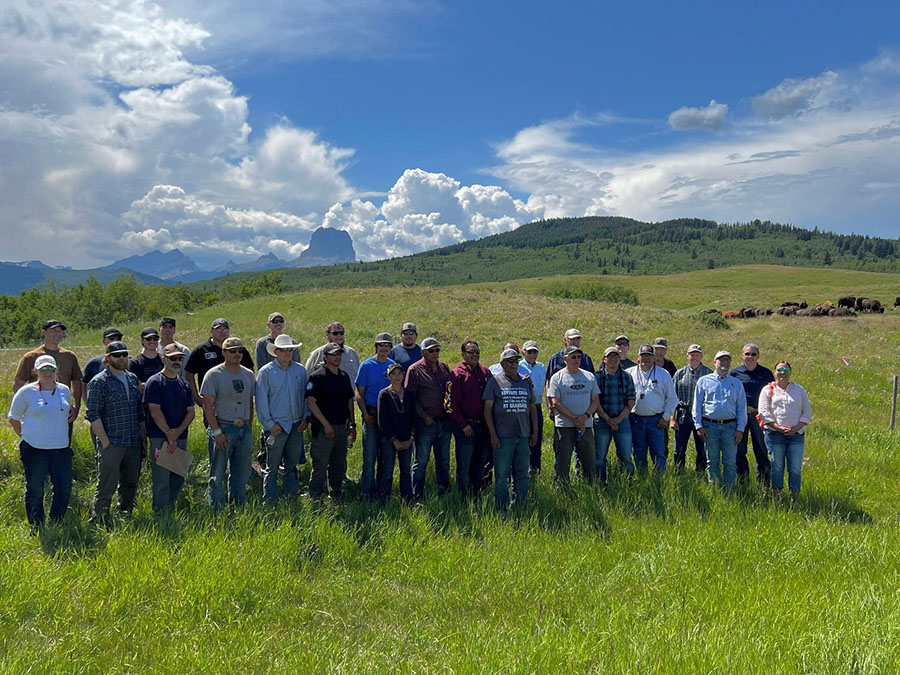
Since the release, I’ve field a lot of questions from our members who want to know how this will turn out. I don’t have the answers, none of us do yet.
As with any grand endeavor, the return of bison to their ancestral lands comes with uncertainties and risks. All I can say for certain is that Glacier-Two Medicine Alliance will continue to stand in solidarity with the Blackfeet Nation and the many federal agencies, non-profit organizations, and community members who have helped advance the shared vision of the Iinnii Initiative.
Undoubtedly there will be challenges that will arise as there is in any wildlife reintroduction project. My hope is that we, collectively, will have the patience and grace for tribal and federal managers to learn and adapt, and to give this restoration time to be successful.
At the moment, Blackfeet managers are closely monitoring the animals’ movements to learn how they will use the land and to be ready to proactively respond to emergent issues, such as impacts to motorists or agricultural lands. A memorandum of understanding between the Glacier National Park and the Blackfeet Nation is being finalized to guide how these bison will be managed should they wander into the Park. Parks Canada and the other members of the Blackfoot Confederacy are also cooperating, which represents a trans-boundary partnership. We have strong tailwinds, and I can’t help but feel optimistic.
To truly heal the land and our communities, we must take bold steps. Please join me in celebrating the bison’s first bold step in their return to their ancestral homelands.
